News & Reviews
ReviewsJBL 4367 Studio Monitor loudspeaker review
4/24/17The JBL 4367 is a more consumer-friendly distillation of the highly acclaimed JBL Professional M2 Master Reference Monitor. Using essentially the same 15-inch bass driver as the M2 and the identical dual diaphragm compression driver for the upper-mid and high frequencies, the 4367s definitely bring more than a little pro-audio “cred” to the table.
Despite their non-inconsequential size, these speakers are extremely efficient and relatively easy to drive making them an appealing option for the tube amp crowd. On the other side of the coin, these fairly sized, ported enclosures with 15-inch woofers are capable of producing plenty of low distortion bass. These features, combined with the patented waveguide horn design on the compression driver, give us a speaker with enviable dynamic capabilities.

Highlights
JBL 4367 Studio Monitor Loudspeaker
- Exceptional soundstage.
- Thoroughly enjoyable sound quality both on and off axis.
- The JBL 4367 Studio Monitor has powerful bass capability.
- Efficient and easy to drive so tube lovers, rejoice.
- Bi-wire and bi-amp capable.
- Nostalgic styling with great build quality.
Introduction

James B. Lansing is the innovative audio inventor and speaker engineer whose initials make up the modern name of the company he founded in 1946. JBL is a company that has had a long and storied 70 years of being involved, and often trailblazing, in the industrial and professional audio markets. One of JBL’s first original products was the D130 15-inch driver. With its 4-inch flat wire voice coil and potent Alnico V magnets, it was a revolutionary speaker for its time. So unparalleled was it for its dynamics, efficiency and power that a derivative of this driver remains in production from JBL, to this day.
JBL STUDIO MONITOR LOUDSPEAKER REVIEW SPECIFICATIONS
|
|
I personally have a soft spot for JBL professional woofers. One of the first serious speaker systems that I owned was a custom-built satellite/dual subwoofer combo that was managed by an external active analog crossover. The satellites had a Celestion Beryllium-Copper dome tweeter and a KEF B110 midrange driver. The subwoofers were sealed boxes each with a 15-inch JBL 2235h woofer installed. It was truly a “Frankenstein’s monster” of a speaker set but it served me well for many years. The subwoofers especially, continued to soldier on long after the satellites were replaced with better sounding modern units. Those JBL woofers were great sounding, low distortion drivers that could solidly go down to 20 Hz in room, with the right placement.
It’s that personal experience, tinged no doubt with a certain degree of nostalgia that brings me to look upon the JBL 4367 with a healthy dose of admiration and respect. It’s essentially simple and classic two-way design belies some seriously advanced driver and waveguide engineering. If you are hankering for a mastering room type of speaker for your home stereo setup, the 4367s may be the E-Ticket ride that you are after.
Design


The JBL 4367 Studio Monitor is a two-way front-ported single cabinet design with the crossover set at 700Hz. The styling is classic JBL: a massive single cabinet with a large, front facing 15-inch woofer set below a waveguide horn. True to its M2 lineage, the 15-inch Differential Drive® woofer is taken nearly unchanged from the M2 Master Reference Monitor with only an update to soften the surround and lower the resonance to enhance its performance with the 4367 cabinet. This particular woofer (JBL Model 2216Nd-1) features a specially treated pure pulp (paper) cone set in a cast frame. It uses dual 3” voice coils, with dual gaps, mated with a neodymium magnet system to help reduce distortion and overall mass while increasing efficiency.


The higher notes are handled by a proprietary 3” dual-diaphragm, dual-voice-coil compression driver (JBL Model D2430K) attached to JBL’s High Definition Imaging (HDI™) waveguide horn. This driver’s design is intriguing enough that it warranted a U.S. patent. In the JBL 4367 Studio Monitor press release, JBL comments: “The D2430k dual-diaphragm, dual-voice-coil compression driver, employs two annular (ring-shaped) diaphragms and two voice coils to deliver extended high frequency response to 40kHz with extremely low distortion even at high volume levels. The annular diaphragms are not subject to the break-up modes of a conventional dome diaphragm, and the use of two voice coils yields a dramatic increase in output and power handling.” The waveguide horn is a new, patent pending, design made from an extremely dense and acoustically inert composite. Its design is meant to control and extend the frequency response, both on and off axis, and to provide a deep three-dimensional soundstage all the way down to the crossover point.”


The loudspeaker cabinet has one-inch thick MDF walls and an additional 5/8-inch thick surface baffle below the horn for a total 1-5/8 inches of thick, massive and unmoving support for the woofer.

Rigidity is further enhanced by the use of two varying braces connecting all of the vertical panels. The rear of the cabinet has four gold-plated connections for bi-amplification or bi-wiring through the separate networks, but JBL includes a pair of heavy-duty jumper cables for single-conductor usage as well.
The JBL 4367 Studio Monitors also feature high frequency and ultra-high frequency trim controls on the front panel to facilitate optimal sonic adjustment in any room.



Overall, I found the speakers build quality to be excellent and commensurate with a product of this price level.
Setup

For this review, the connected components consisted of: an OPPO BDP-105 Universal Disc Player, a Technics SL1200 Mk 6 turntable with a KAB fluid dampened tonearm mod and a Shure M97xE phono cartridge, a Parasound “Zphono” phono preamp, two Class D Audio SDS-470C Power amplifiers (300 watts @ 8 ohm, 600 watts @ 4 ohm) and a Panamax M5500 power conditioner. Speaker wire and interconnect cable by Blue Jeans Cable.
On paper, the JBL 4367 looks to be an extremely efficient and capable loudspeaker design. One of the things that I needed to consider when I was working on placing the speakers was that we essentially have a capable 15-inch driver placed inside a roughly 4 cubic foot, ported enclosure. It was a fair bet to assume that getting good bass response was not going to be a problem. After a little experimentation, I settled on a result that had the speakers placed about 8 feet apart, toed in approximately 15 degrees, and set well into the room. This allowed for the best overall imaging while keeping the bass punchy but not overpowering at my main listening position, about 9 feet away. With some additional trial and error, I settled at keeping the High Frequency and Ultra High Frequency trim dials at the default zero level throughout my listening.
Performance
There is a school of thought among some audio reviewers that consider the use of a well-designed two-driver, two-way bookshelf speaker to be the most efficient way to get precise imaging and soundstage from the biggest part of the audio range. If you subscribe to this line of thinking, then consider the JBL 4367 to be probably the most effective bookshelf speaker you’re likely ever to hear, albeit in a more armoire-sized form factor. Once I got them set up and positioned just so, I believe these JBLs gave me some of the best vocal reproduction and clearest sound staging that I’ve come across from a pair of classic bass-reflex type speakers.
Male and female vocals were clearly delineated and spatially positioned to an extremely fine degree. This level of detail was, no doubt, afforded by JBL’s novel compression driver and waveguide combination. The inherent dynamics (and sheer lung capacity) that these speakers also possess make listening to any gospel singer or blues-belter for example, a truly visceral experience. The JBL 4367s also allowed me to hear deeper into the music by providing more exposition to various instruments than I felt I was used to. It made individual instruments easier to pick out in string concertos while guitar riffs and power chords seemed to have a heck of a lot more going on to them than I had previously remembered.
These JBLs are also, easily, some of the most efficient speakers that I’ve ever used. My 300 watt per channel Class D power amp had the 4367s singing at higher-than-normal room filling levels with barley a quarter-turn of the volume knob of my pre-amp. Live recordings sounded “very” live and, when played back at volume, made for a very convincing illusion. It’s a very safe bet to say that these speakers would be seriously tube amp friendly, if you are so inclined.
The other key to the JBL’s Studio Monitor Loudspeaker’s impactful performance is found in the lower frequency section. The 4367s easily put out significant amounts of distortion-free bass without any noticeable signs of bloat or overhang. JBL has always had a reputation for engineering woofers with excellent distortion characteristics, particularly with their pro audio and competition automotive drivers, and the woofer in the 4367 seemingly continues that tradition. The impact and decay of the lowest piano notes were potent and full of detail. Kick drums on driving rock music were almost concussive when they hit. At no time during my review did the woofers in these speakers give the impression that they were taking a back seat to the compression driver, in terms of timing or accuracy. We’ve all heard those quaint little discussions among some audiophiles about how smaller woofers sound “faster” than big woofers and such. Well the 15-inch drivers in these JBLs stand that argument on its head and blow raspberries at it.
I also think that vinyl lovers will particularly appreciate the sonic capabilities of the JBL 4367 Studio Monitor Loudspeaker. Having just recently become the owner of a half-decent turntable, and my in-laws pristine jazz record collection, I’ve been spending more and more time with the 12-inch black plastic platters of late, and have been enjoying their virtues. Since vinyl has measurably less signal to noise ratio and dynamic range compared to digital, I’ve noticed a difference on a few occasions when comparing both the vinyl and CD version of a given album. More often than not, and to varying degrees, I’ve tended to give the nod to my CD copies as having the edge in sound quality and it typically boils down to a difference in perceived clarity and dynamic range. There is no denying however that the warmth of vinyl sound has a unique appeal all its own. I’ve been discovering that the JBLs inherent extended dynamics and wide soundstage really help translate the best qualities of records and noticeably improved my listening experience with them. It seemed to be a genuinely happy match.
The following are a few notable musical selections that I felt showed off the JBLs during our time together:
 Zoot Sims “Quietly There”
Zoot Sims “Quietly There”
Zoot Sims, Quietly There: Zoot Sims Plays Johnny Mandel, JVC XRCD. Zoot Sims’ tenor sax work sounds lively and detailed throughout this disk with a big presentation that turns positively massive when rendered by the JBLs. On the track “Cinnamon and Cloves” a gentle keyboard intro and accompanying maracas sounds almost like musical raindrops floating between the two speakers with a crisp ringing decay to the notes.
This “scene” almost sets you up to expect a sleepier kind of tune before the woofers firmly pop you with a kick drum followed Sims’ room-filling sax.
On “A Time for Love” the detail afforded by the JBL’s compression driver make Sims’s breathing easy to hear as he plays the smoldering lead, almost lending his performance an otherworldly quality that hovered midair, just in front of me. This tempo continues on the track “Emily” along with a lovely background interplay between the piano and bass. The 4367s keep these background instruments in perfect focus as I can clearly pick out and hear into the vibration of the bass string plucks.
 Tony Bennett “This Is All I Ask”
Tony Bennett “This Is All I Ask”
Tony Bennett, This Is All I Ask, Columbia Stereo LP, 1966. Tony Bennet’s voice is unmistakable. It is equal amounts graceful, controlled and powerful and it is showed off in grand style on this trademark album. Backed up with tasteful jazzy and orchestral arrangements courtesy of Ralph Burns and His Orchestra and the Ralph Sharon Trio, the album is a stylish vocal tour-de-force.
From the opening notes of “Keep Smiling at Trouble,” the JBL 4367s throw up a huge, expansive soundstage with Tony’s voice locked in the dead center. The inherent warmness of the album’s sound came through fully on the JBLs but not so much that it marred any of the subtle vocal inflections or phrasing.
This was particularly evident on the romantic ballad “Autumn in Rome” where the detail in Tony Bennett’s voice came through just exquisitely on the softer passages, but the speakers still kept everything sounding warm and especially lush. And when Tony’s voice would stretch and hit its full volume, the dual diaphragm compression driver and waveguide helped keep everything extremely well controlled with no signs of distortion or break up, even at volumes louder than I normally listen to. As a matter of fact, there were more than a few occasions that I found Tony’s voice sounding, not just good, but startlingly good. Not to give the supporting musicians short shrift, the piano notes on “Got Her Off My Hands” were extremely well defined with good decay and a nice ring to them. The JBLs woofers kept the standup acoustic bass lines sounding solid and meaty with plenty of detail in the plucks and reverb. No bloat to speak of. On “Sandy’s Smile” the drum cymbals had an especially nice sheen and sparkle to their sound.
 Melody Gardot “My One and Only Thrill”
Melody Gardot “My One and Only Thrill”
Melody Gardot, My One and Only Thrill, Verve, CD. A beautifully recorded disk of jazz standards featuring Miss Gardot’s sensuous vocals. As with all the other material I listened to, the JBL 4367s threw up a huge soundstage and yet kept a tight focus on the background instruments as well so as not to lose any of their detail.
On the song “If the Stars Were Mine” the JBLs handle the softness in Gardot’s vocals here with skill, balancing the lower volume and gentle phrasing but still fastidiously rendering all the details each time she clearly draws breath. Sounds like the scrapes on the accompanying acoustic guitar strings or the sparkling sound of the background wind chimes are handled with the sort of deftness and care that you might not expect from a pair of big black boxes that look like they should come with a matching roadie.
On “Your Heart is as Black as Night” the piano and horns sound particularly exceptional. The JBL’s woofer rounded out and filled in the appropriate piano notes with just the right amount of weight while the compression driver kept the horns sounding crisp and clear but without any distortion or irritating sharpness in the sound. But to get the best demonstration of what these speakers can do with this particular disk, cue up “The Rain”, an intimate slow burning tune that is just vocals and piano with a sparse sprinkle of sax and acoustic bass. I felt as though I was completely transported to a small dark basement club where it was just me and the performance, no speakers could be found on this one. I can’t pay the JBL 4367s a better compliment than that.
 AC/DC “Highway to Hell”
AC/DC “Highway to Hell”
AC DC, Highway to Hell, ATCO CD. And now for something completely different! This is neither audiophile nor Hi-Rez in nature, but it’s honest to goodness hard rock that any speaker worth its salt (to me) needs to be able to handle. The JBL 4367s, true to their studio heritage, grab all these tracks by the scruff of the neck and play them back with an audacious confidence that only a studio monitor playing back a session tape could have.
And while it was an easy guess to expect that these speakers would handle this material competently enough, I wasn’t prepared for the level of finesse (you read that right) that the JBLs exhibited with Bon Scott and the boys. Right from the opening guitar riff of “Highway to Hell” to the throw away, “Shazbot, Na-noo, Na-noo” line at the end of “Night Prowler” I heard more details being mined out of this CD than I have ever heard previously. There were more layers and separation between the notes in Angus Young’s guitar solos. I heard more grit and scratch from Bon Scott’s voice.
The bass lines and kick drums were just incredibly solid and impactful and there were additional subtleties like reverb from the recording room that I hadn’t picked up on before. While I did not expect to have a somewhat transformative experience in listening to AC/DC, of all things, one of the 4367s core attributes started becoming very clear to me. It’s that this speaker, while perfectly happy in a carefully managed home listening environment, would be equally at home in a large event hall energizing the room at volume with all manner of requests. It seems that the crafty buggers at JBL have figured out how to produce a bona-fide audiophile monitor that also moonlights as possibly the world’s best party speaker!
 Leonard Bernstein “Beethoven’s Ninth”
Leonard Bernstein “Beethoven’s Ninth”
Leonard Bernstein, Beethoven Ninth Symphony New York Philharmonic, Columbia Stereo LP, 1969. Not just another version of Beethoven’s Ninth but, after much searching and listening, I believe this is the version that was used, and uncredited, in the end credits of the movie Die Hard. I have the CD remaster of this performance (originally recorded in 1964) as well and, while it does sound cleaner and a little more extended, the vinyl has an appealing warmness and immediacy that makes it more enjoyable to me.
The JBL 4367s expanded maestro Bernstein and his performers big and wide, making the presentation properly memorable. Each of the instrument sections came off as well defined, the compression driver more than held its own and did not flinch as the instrumentation got louder and more complex in various passages.
The woofers were sprightly enough to keep up with the upper end gymnastics, filling in the lower end with the rolling thunder of the tympani drums. This was especially evident in the “Molto Vivace” section. The ubiquitous “Ode To Joy” played back on these speakers becomes something just short of a religious experience. The vocal soloists are each clearly sorted in the soundscape, even as they are all singing together and overlapping their parts without getting lost or becoming muddled together in a big vocal mush. The Julliard Chorus fills in nicely at the appropriate points remaining as clear and detailed as a vocal mass can. It’s all sounds very sumptuous and yet the 4367s kept revealing unexpected levels of detail, particularly in the string sections, from a well-preserved, but old, piece of vinyl. I came away appreciating that these JBLs have a very deep and capacious dynamic well from which to draw upon.
All in all, the JBL 4367 is a pretty flexible and forgiving speaker when properly set up in a room. As I mentioned earlier, obtaining acceptable levels of bass with these speakers won’t be an issue. On the contrary, place them too close to the walls and you may find yourself with an overabundance of bass. If you are stuck with near-wall placement as your only option with these speakers, then I think you would need to seriously consider some sort of bass trap treatment or rely on room correction to alleviate any excessive low end response. To that end, if there were one thing that I would like to see on the JBL 4367, it would be the addition of some sort of boundary compensation switch or another set of trim controls to adjust the bass frequencies. I think this would help give prospective buyers additional flexibility for placement in various room scenarios.
On The Bench
Benchmark audio tests of the JBL 4367 Studio Monitor Loudspeaker were conducted using a calibrated Earthworks M30 microphone. The source device was a LYNX Two professional PC sound card using test signals created by SpectraPLUS audio measurement software. Measurements for on and off axis frequency response were taken at a distance of 1 meter from the speaker while distortion measurements were taken at 1 foot distance from the appropriate driver.

The JBL 4367’s on-axis frequency response shows essentially textbook good behavior from 500 Hz right up to 20 kHz and certainly a little beyond. Everything below 300 Hz is governed by room modes and is less of a concern at this point with this measurement.

This chart shows the on-axis frequency response directly compared to the 30 degree off-axis measurement. The two plots track each other tightly until we get to about 13 kHz where the treble energy begins to gently roll off.

This graph shows an averaged in room response that was culled from six measurements taken at various points around the main listening area. Unlike the on-axis measurement, this tries to give a better indication of what the speaker’s legitimate response is. There is a very mild upper treble reduction beyond 13 kHz but this is typical for most speakers in room. The entire midrange to lower treble area is exceptionally flat and well behaved. The bass region shows a gentle lift from room gain at 150 Hz down to almost 30 Hz where it begins to gradually roll off.

Distortion measurements for speakers are typically done at a 90 dB reference point but the distortion numbers for the JBL 4367s were low enough that I also measured them at 100 dB to really see what these drivers could do. This is considered loud by any stretch and some lesser drivers would balk at these levels. This particular graph shows a distortion level at 10 kHz of only 0.389017% at 100 db. Essentially inaudible.

At 5 kHz the distortion level at 100 dB is lower still, at 0.364581%. Also, inaudible.

At 1 kHz the distortion level at 100 dB drops even further to 0.096540%!

At 500 Hz the distortion level at 100 dB goes even lower to 0.066376%. That is remarkable and counts towards a squeaky-clean sounding midrange.

At 250 Hz the distortion level at 100 dB begins to rise ever so slightly to 0.080793%.

I seem to have misplaced my 100 dB distortion measurement at 40 Hz but I kept the one I took at 95 dB which shows a distortion level of only 0.127169%. Still inaudible and I guarantee at 100 dB, it was barely any higher than this.

At 32Hz, the distortion level at 100 dB rises gradually to only 0.453090%! Remember that distortion levels in speakers are commonly considered to be audible at levels of 10%.

At 24 Hz the distortion level at 100 dB rises to just below the level of audibility, when measured at the driver, at 9.55191%. This is taxing the driver to beyond the limits of its low-end rating and should be considered an excellent showing at this SPL.

For the sake of comparison when the same 24 Hz measurement is taken at the ports, where most of the sound will be emanating from at this frequency, the distortion level is only 2.639647%!
Conclusions

THE JBL 4367 STUDIO MONITOR LOUDSPEAKER is that rare speaker that is both scrupulously refined and absurdly powerful in equal measure.
LIKES
- Efficient.
- Huge soundstage, while still retaining plenty of detail.
- Bass, gobs of bass.
- Classic styling.
WOULD LIKE TO SEE
- Controls to tailor bass for more flexible room placement.
- While Black and Brown Walnut veneer are fine, a Rosewood finish option would look very sharp on these.
A few years back, the term “Monkey Coffin” was coined by a certain audio reviewer to describe the traditional “box” speaker and the somewhat stagnant level of its general development. “It’s pretty much all they are good for anymore” (paraphrase) was the underlying opinion. Well if that still be true then the JBL 4367 would be a coffin that I should fancy myself to be buried in! They would need to be playing during my funeral so that while attendees were mourning my passing they could revel in the sound of my astonishing musical taste!
In all seriousness, the JBL 4367’s are exceptional loudspeakers that are truly a triumph of engineering. They push the envelope and show what can be done with the traditional two-way speaker format when you have a good design, even better drivers and a big enough box with a pair of extra holes punched in it. The highly-advanced drivers have excellent efficiency and impeccably low distortion. The specially designed waveguide helps to ensure a wide and deep sound stage and all together give this speaker a large dynamic reservoir to facilitate its lighting up a room with sound.
I confess to being enamored with the classic look of these things and the nostalgia that they bring to table. There is, however, nothing nostalgic about the sound of the JBL 4367s. They sound far and away better than most vintage speakers that I can begin to imagine. If anything, they bring to mind the effortlessness that I remember hearing from an old Klipschorn but with far more detail in the presentation. They made me smile a heck of a lot during our time together. So, if I had to describe the JBL 4367s in one word, it would have to be: joyful. Yes, these speakers sounded positively joyful.
The author would like to thank Robert Ebeling for his assistance in preparing this review.
More from JBL Specialty Audio
 1/6/20 JBL Introduces L82 Classic Bookshelf Loudspeakers at CES 2020
1/6/20 JBL Introduces L82 Classic Bookshelf Loudspeakers at CES 2020
 1/10/2018 The JBL L100 Classic took home Best of CES Awards from TWICE and Residential Systems
1/10/2018 The JBL L100 Classic took home Best of CES Awards from TWICE and Residential Systems
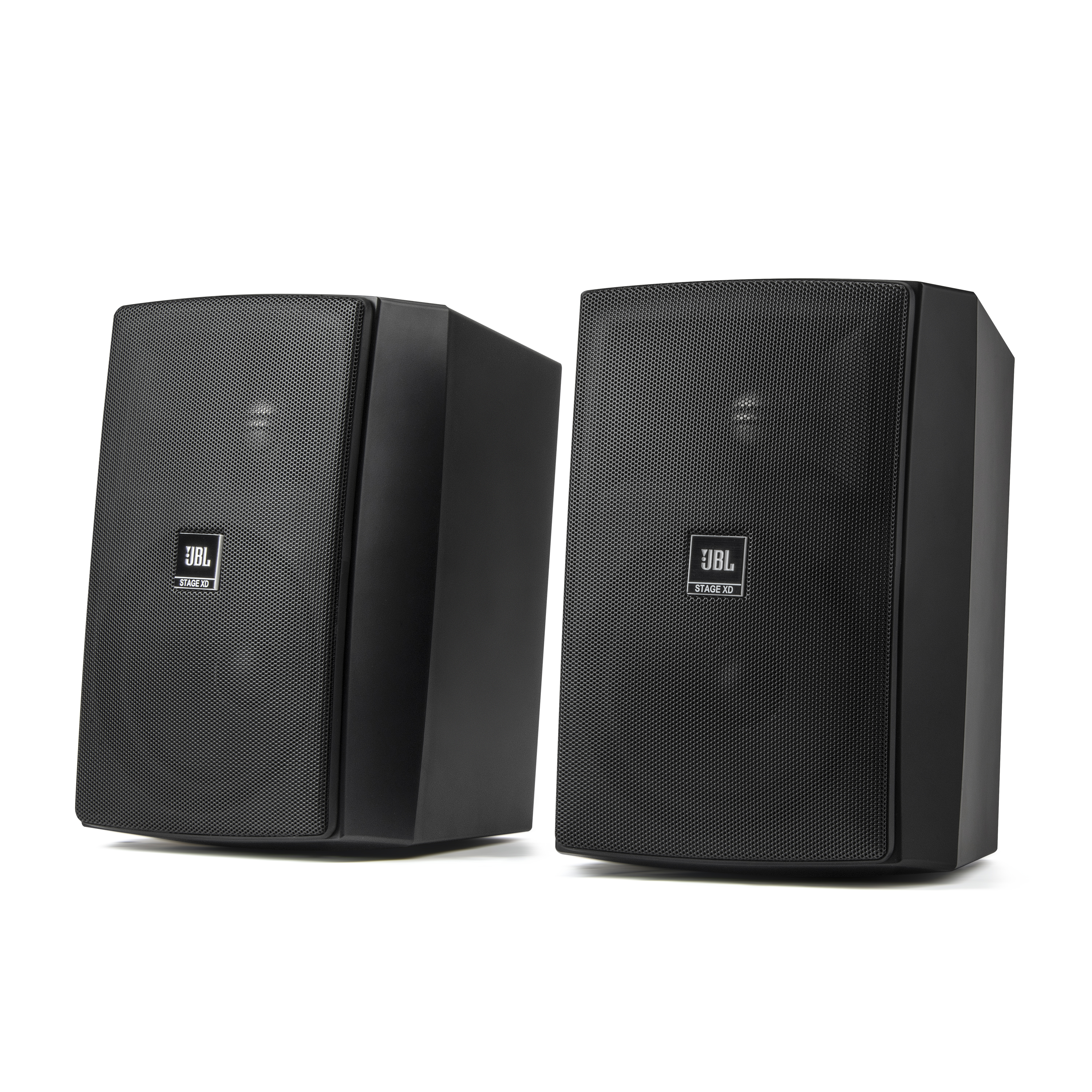 05/17/22 HARMAN Luxury Audio Introduces JBL Stage XD Indoor/Outdoor
05/17/22 HARMAN Luxury Audio Introduces JBL Stage XD Indoor/Outdoor All-Weather Loudspeakers Built for Extreme Durability
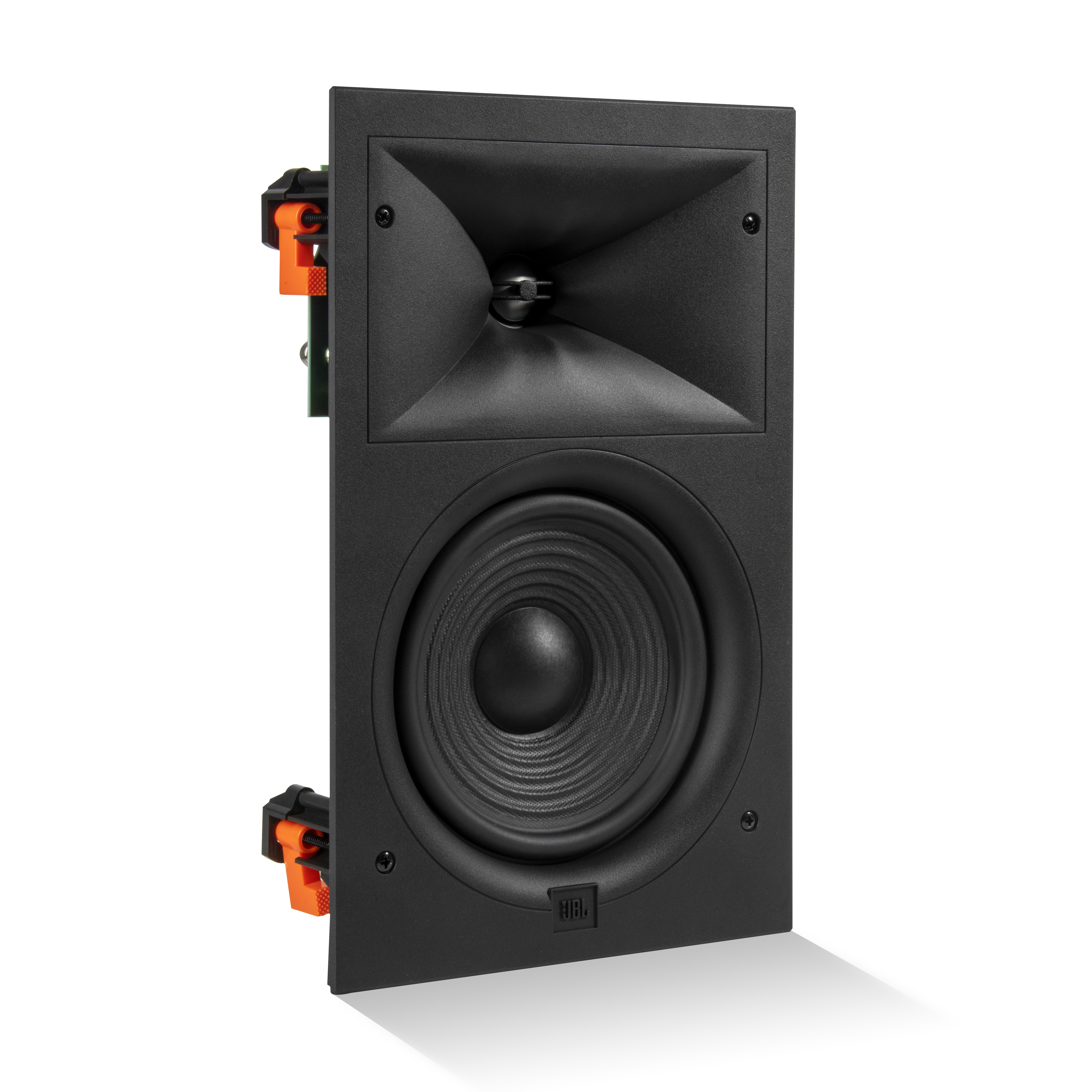 05/17/22 HARMAN Luxury Audio Introduces JBL Stage Architectural Series Loudspeakers
05/17/22 HARMAN Luxury Audio Introduces JBL Stage Architectural Series Loudspeakers With Visually Discreet, High-Performance Sound
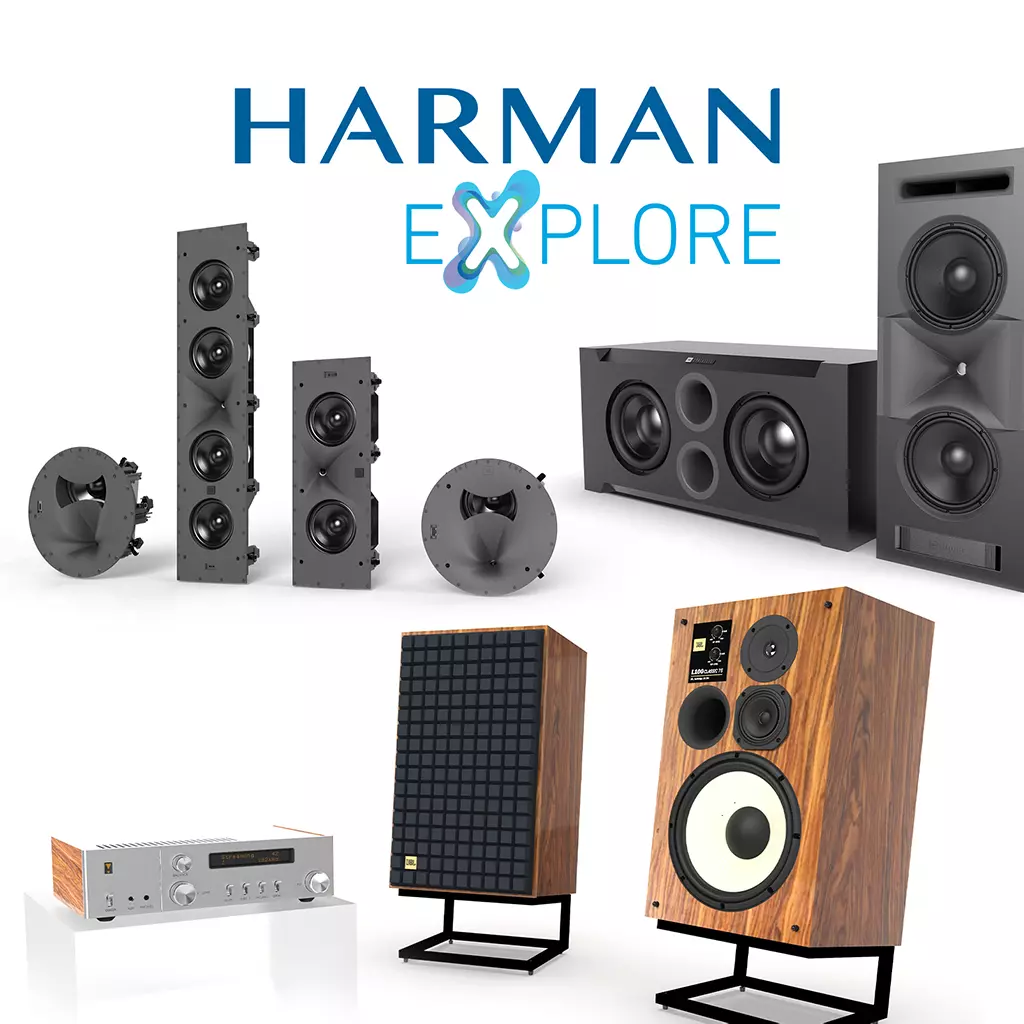 1/18/21 New products launched at HARMAN ExPLORE
1/18/21 New products launched at HARMAN ExPLORE
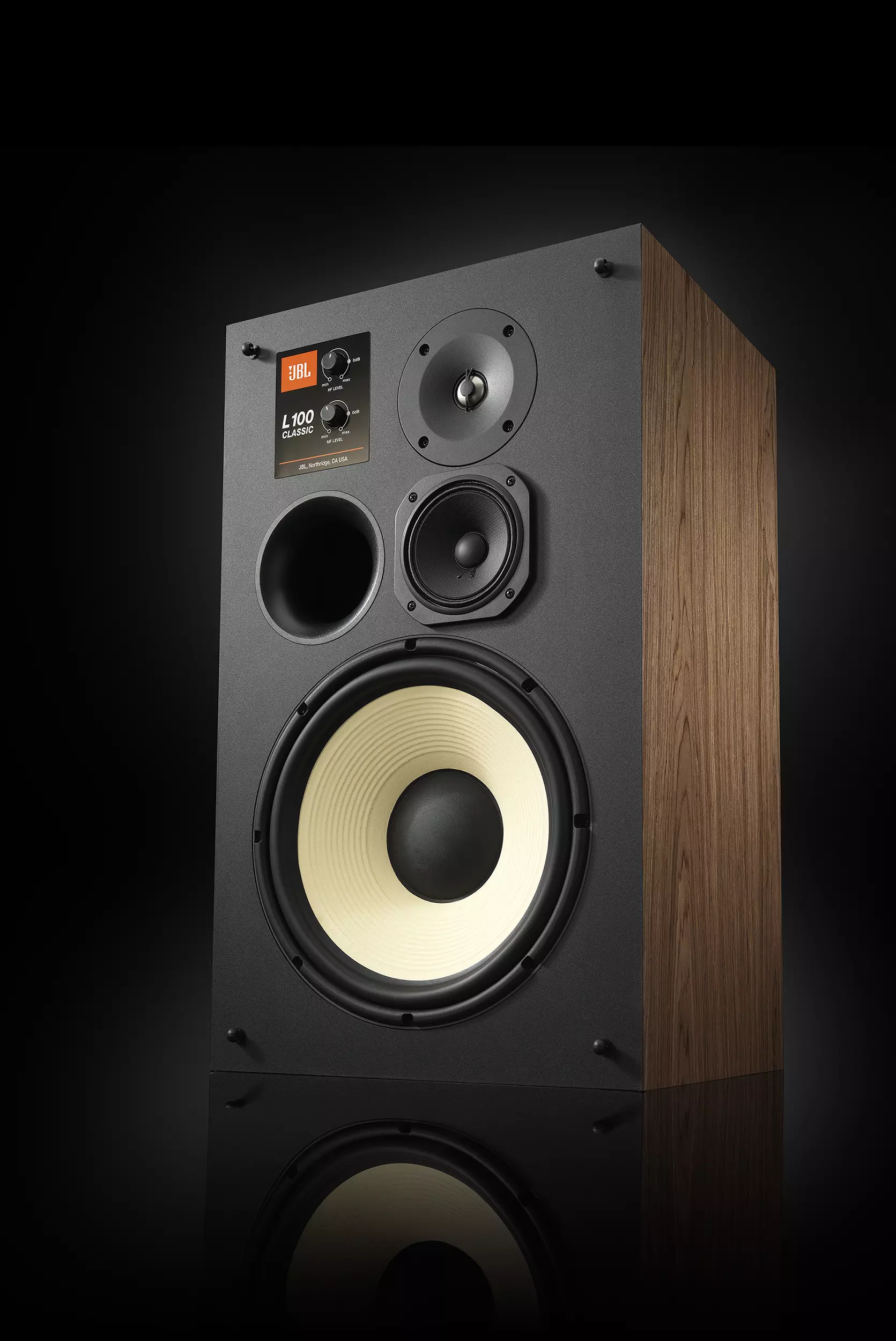 3/10/2019 HomeTheaterReview.com's review of the L100 Classic
3/10/2019 HomeTheaterReview.com's review of the L100 Classic
 HARMAN Luxury Audio’s JBL Conceal Series
HARMAN Luxury Audio’s JBL Conceal Series
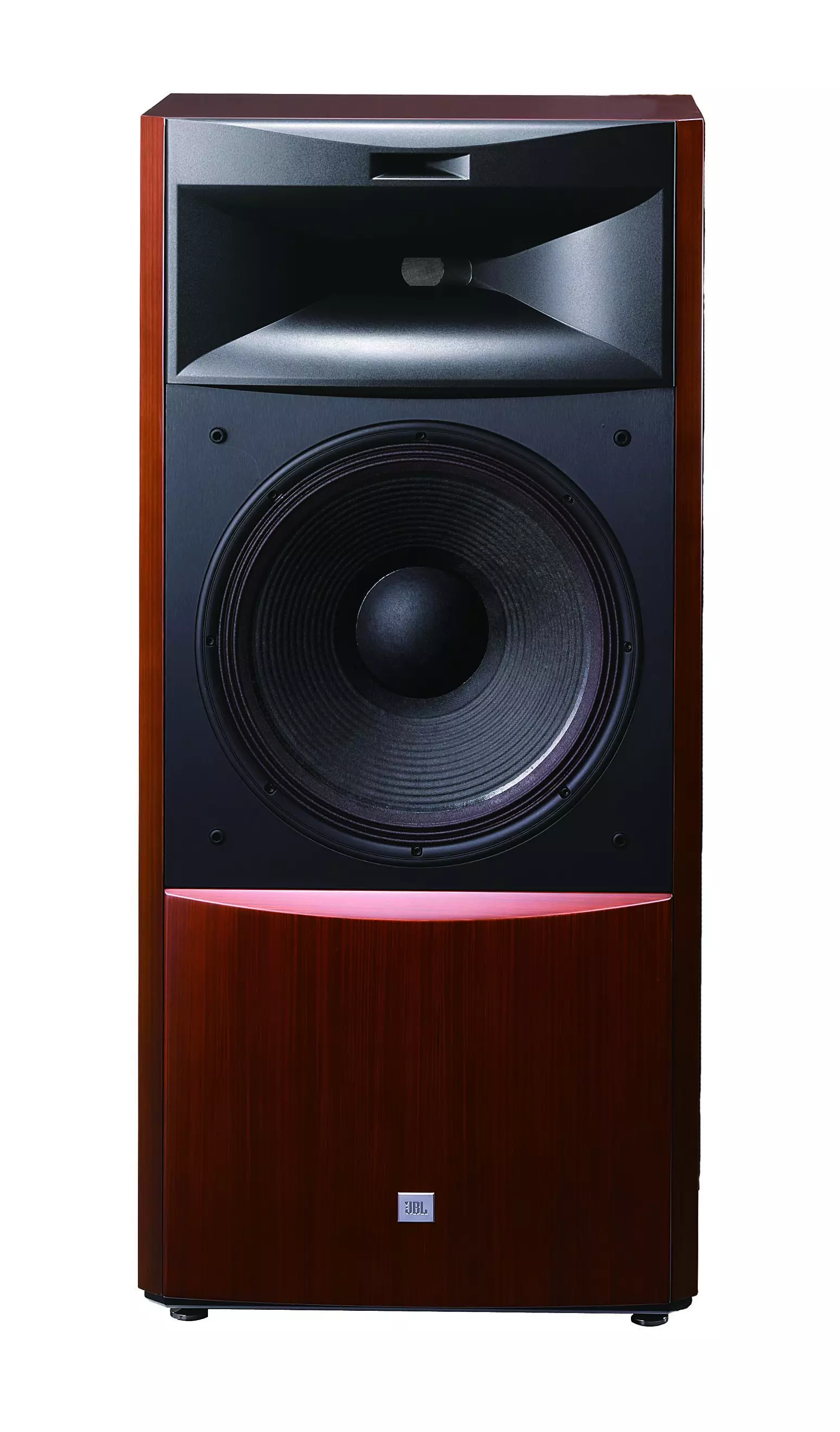 4/13/20 Stereonet's Review of the S4700
4/13/20 Stereonet's Review of the S4700
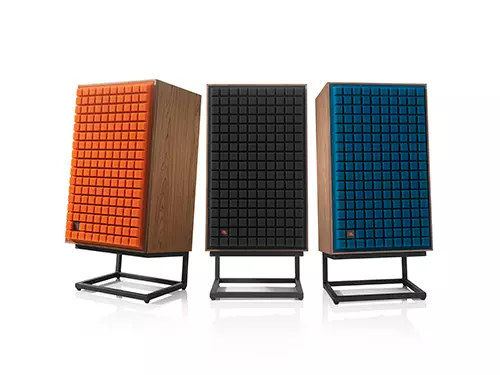 5/3/21 JBL L100 Classic Bookshelf Loudspeaker Review
5/3/21 JBL L100 Classic Bookshelf Loudspeaker Review
 Harman luxury audio packs 75 years of acoustic excellence into new compact jbl 4309 studio monitor series bookshelf loudspeakers
Harman luxury audio packs 75 years of acoustic excellence into new compact jbl 4309 studio monitor series bookshelf loudspeakers
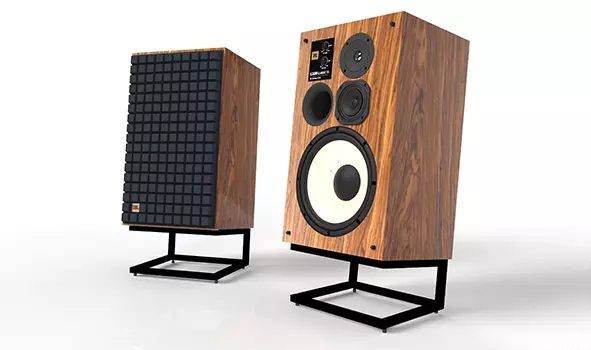 Still Blown Away After All These Years: JBL Launches 75th Anniversary Edition of L100 Loudspeaker
4/24/17 JBL 4367 Studio Monitor loudspeaker review
Still Blown Away After All These Years: JBL Launches 75th Anniversary Edition of L100 Loudspeaker
4/24/17 JBL 4367 Studio Monitor loudspeaker review
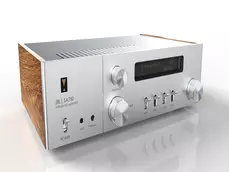 6/18/21 JBL SA750 Amplifier adopts Roon Ready status
6/18/21 JBL SA750 Amplifier adopts Roon Ready status
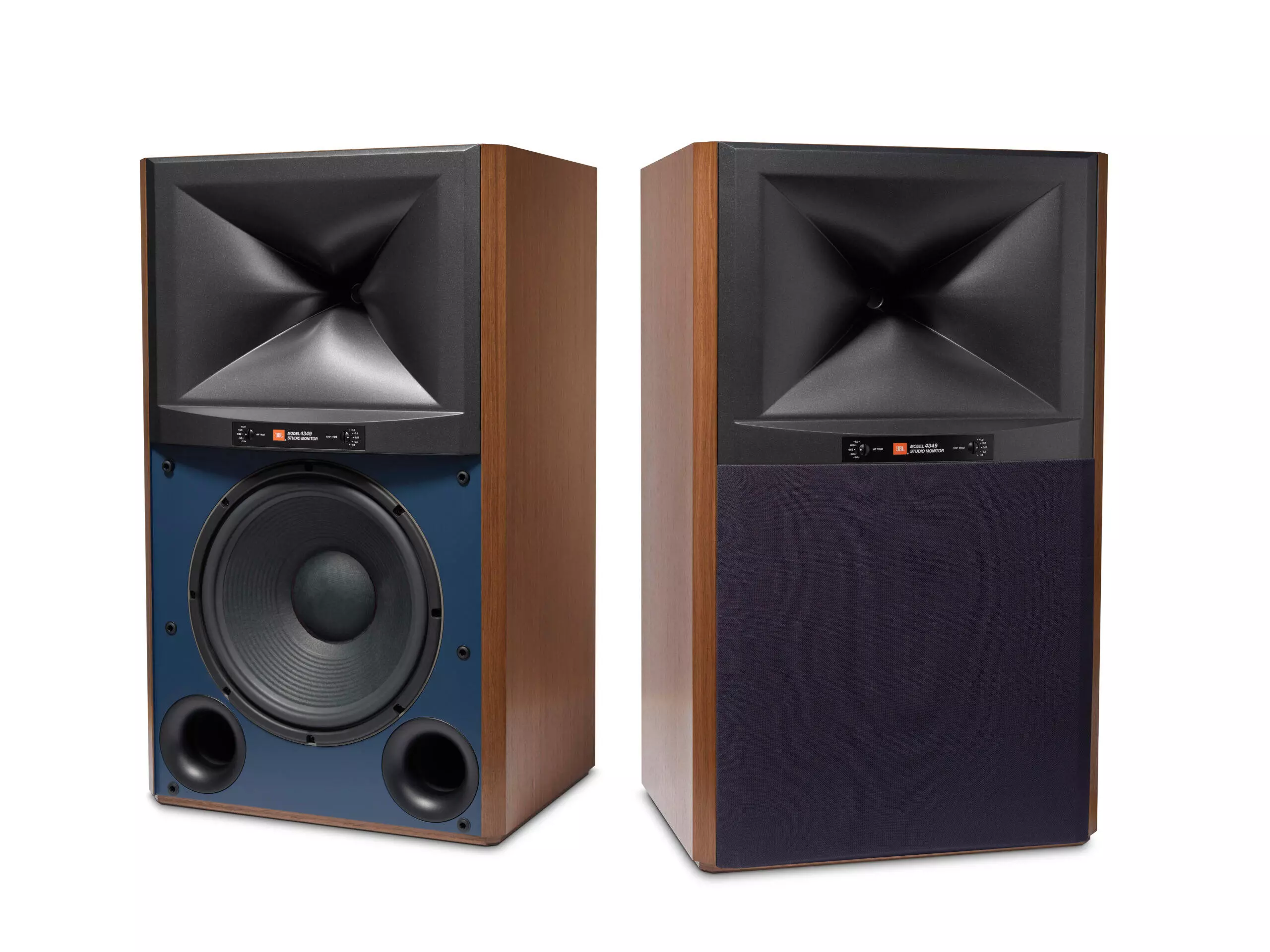 2/28/21 JBL 4349 2-Way Studio Monitor Loudspeaker Review
2/28/21 JBL 4349 2-Way Studio Monitor Loudspeaker Review
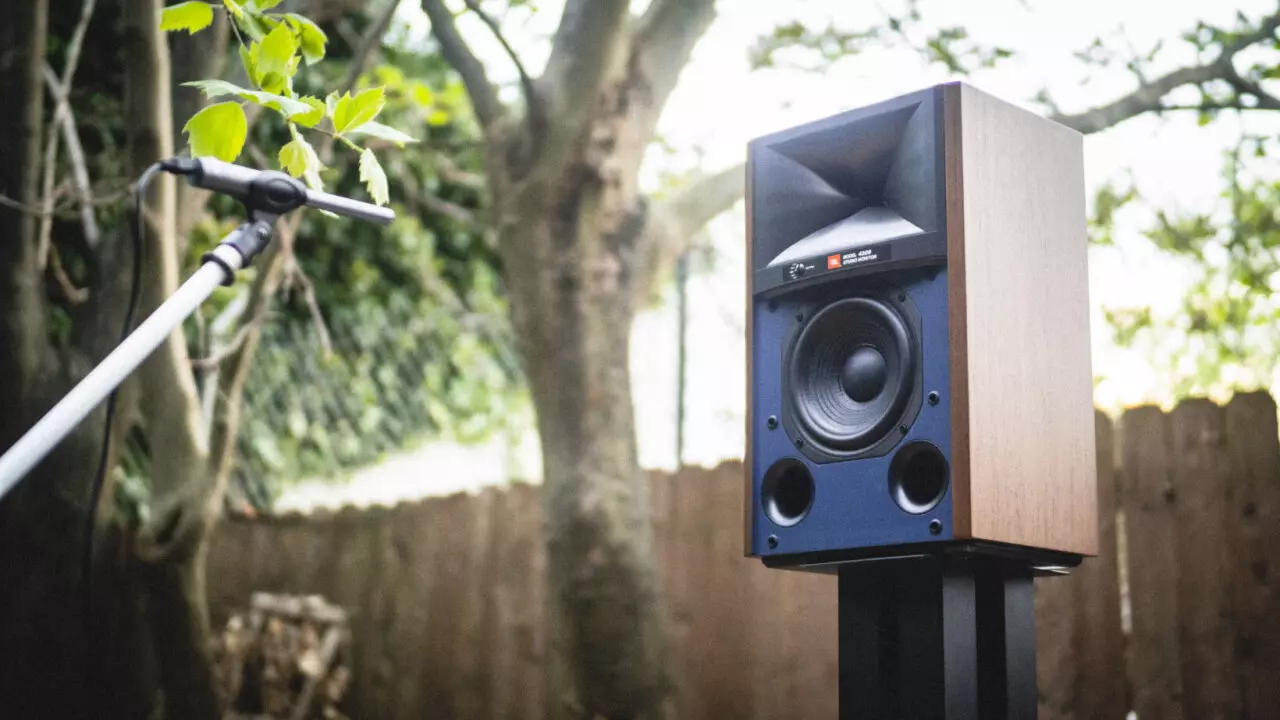 JBL 4309 Review: These retro speakers
JBL 4309 Review: These retro speakers create a stunning soundstage
 7/28/20 Harman couples high-performance modern acoustics with retro design with new JBL 4349 studio monitor
7/28/20 Harman couples high-performance modern acoustics with retro design with new JBL 4349 studio monitor
 2/27/20 Plugged's Review of the L100 Classic
2/27/20 Plugged's Review of the L100 Classic
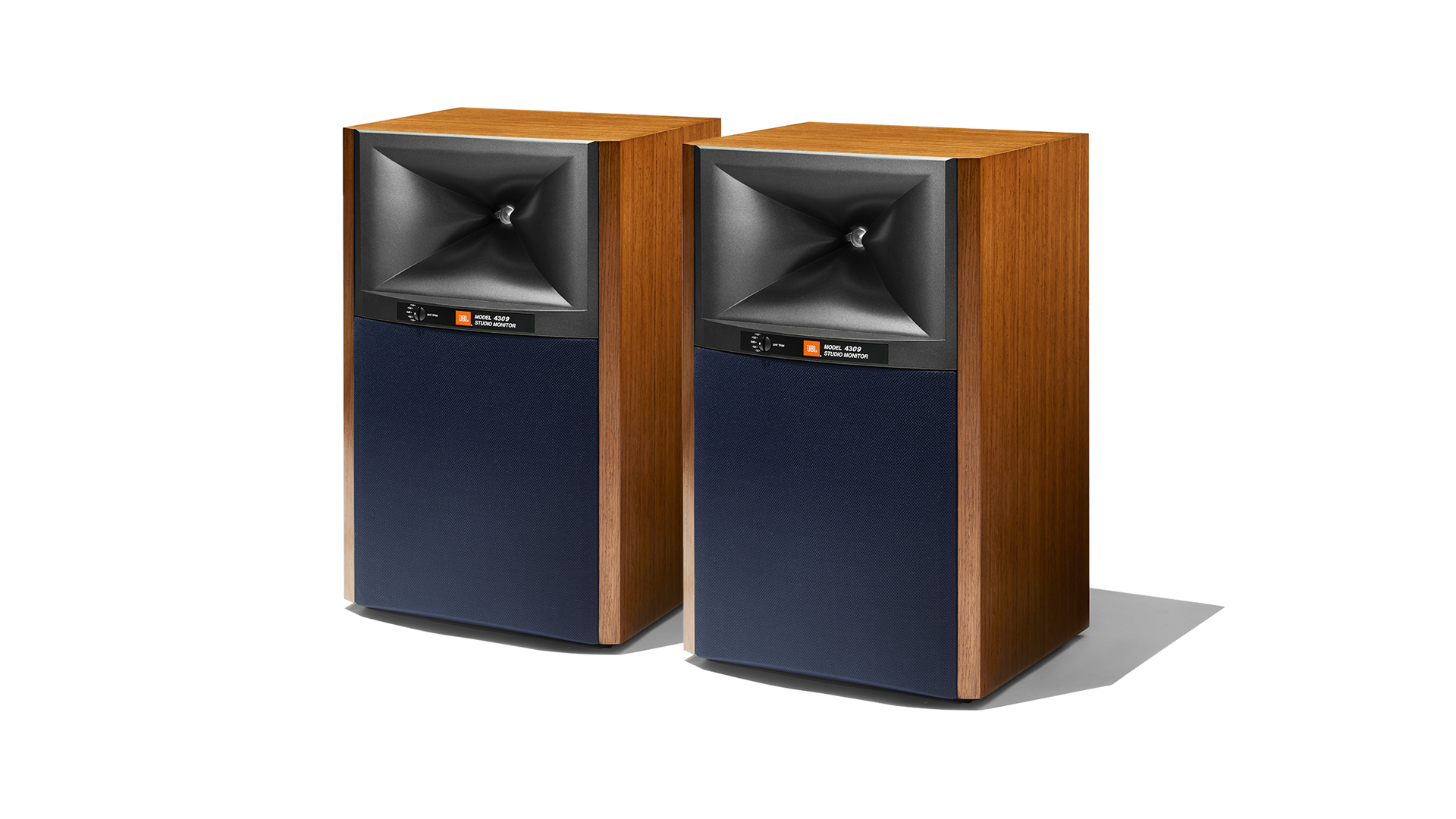 4/20/22 Stereonet’s JBL 4309 2-Way Bookshelf Loudspeakers Review
4/20/22 Stereonet’s JBL 4309 2-Way Bookshelf Loudspeakers Review
 JBL 4312SE speakers celebrates the brand's 70th anniversary
JBL 4312SE speakers celebrates the brand's 70th anniversary
 1/7/2021 JBL Launches Time Machine at HARMAN ExPLORE: Introduces 75th Anniversary JBL SA750 Integrated Amplifier
1/7/2021 JBL Launches Time Machine at HARMAN ExPLORE: Introduces 75th Anniversary JBL SA750 Integrated Amplifier
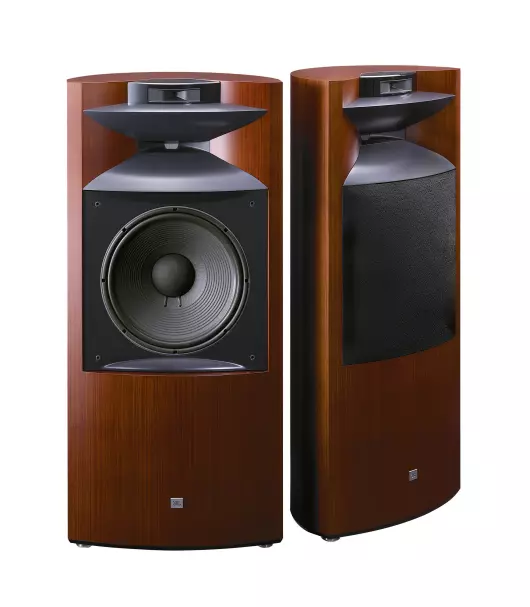 11/19/17 JBL Synthesis K2 S9900 -
11/19/17 JBL Synthesis K2 S9900 - What HiFi? 5 Star award and review






